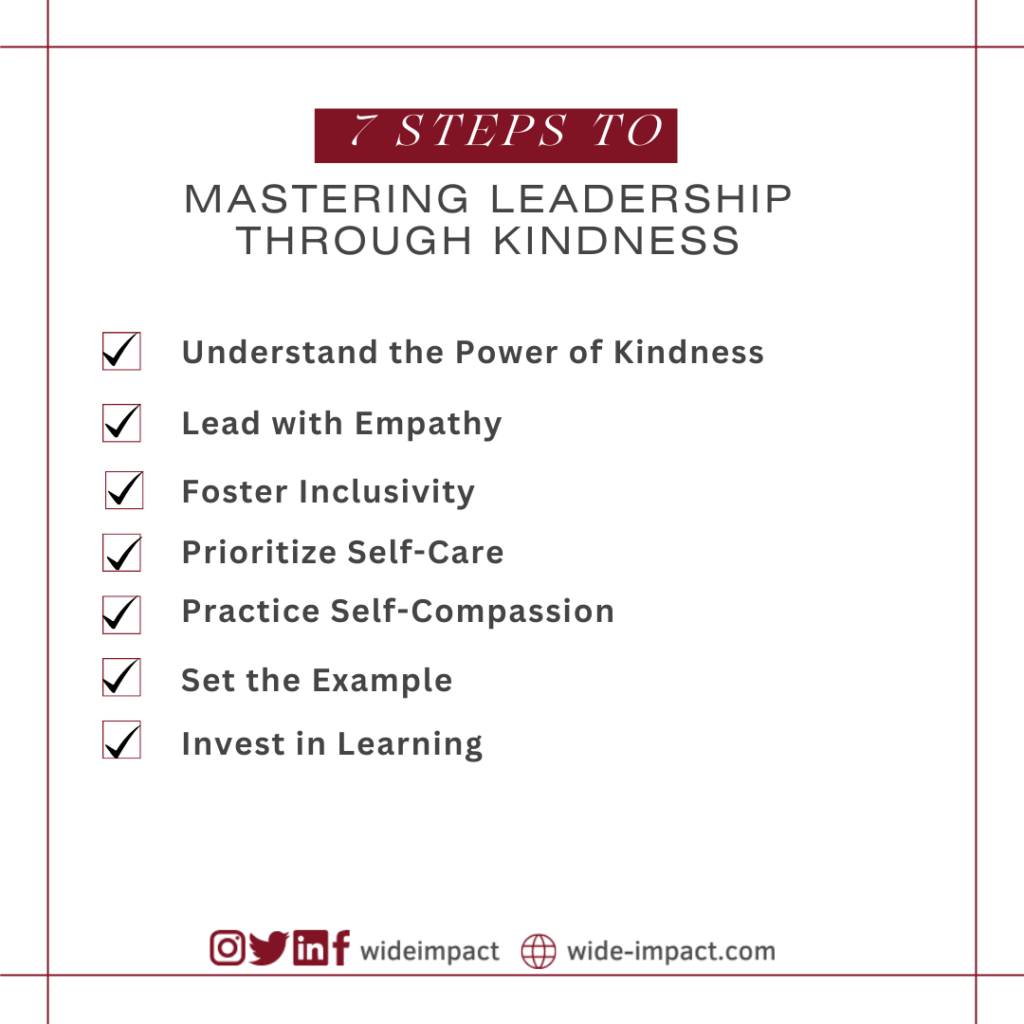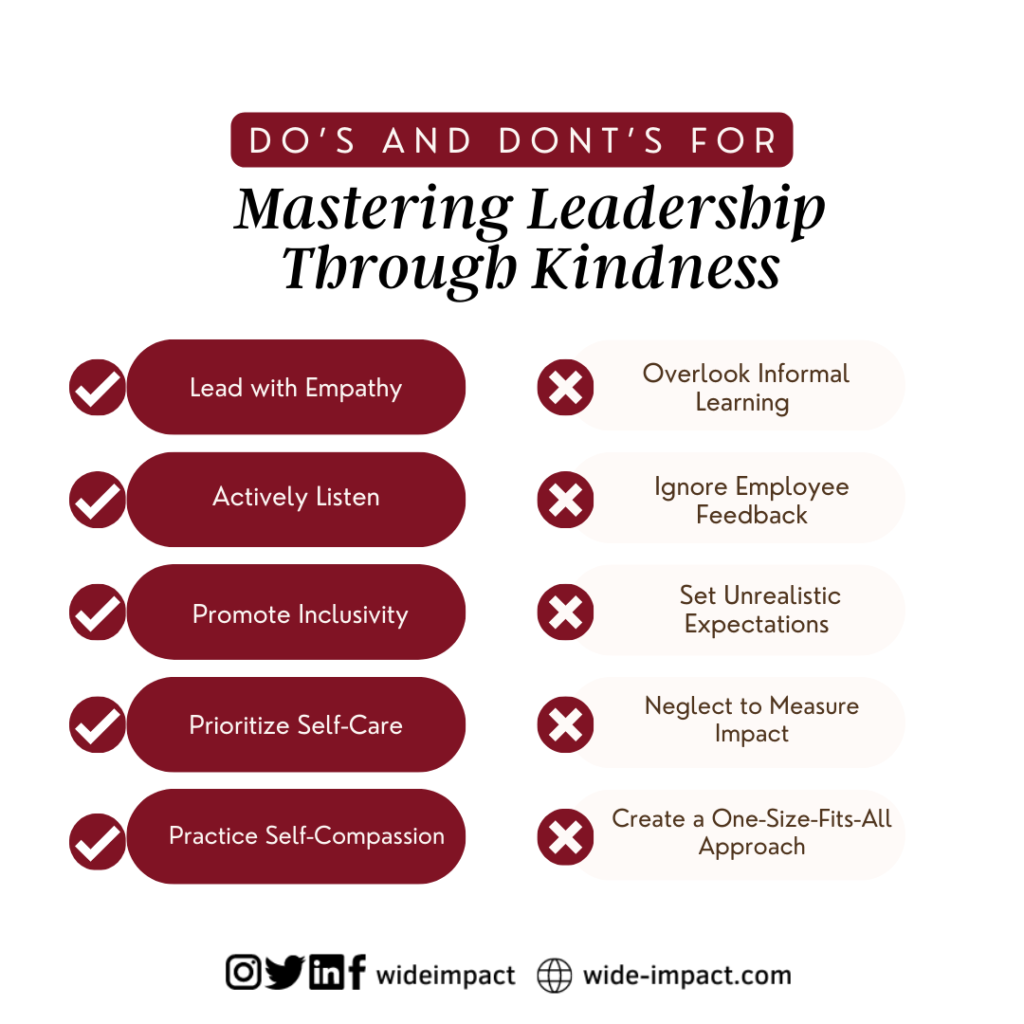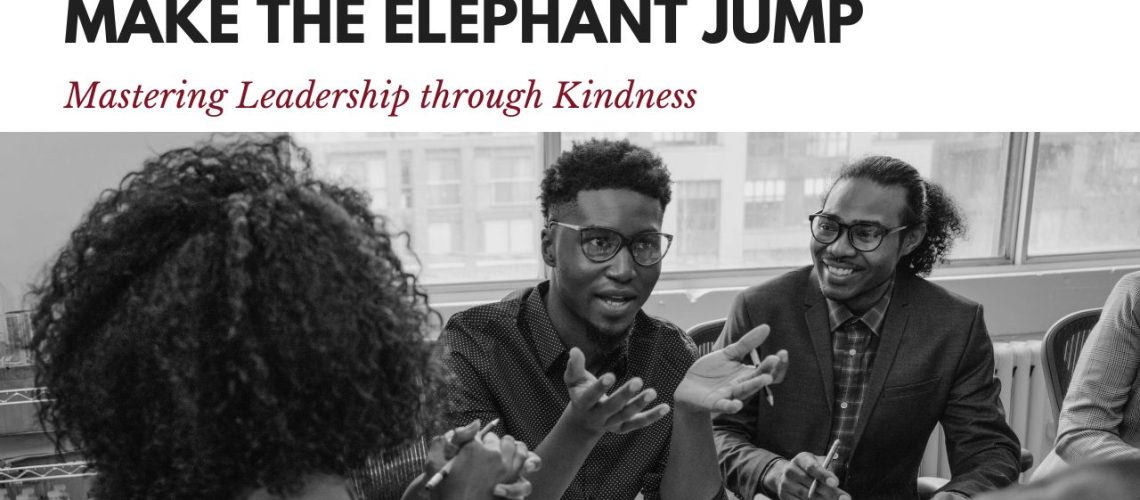By Dr. Salam Slim Saad
In the world of leadership, there’s a timeless proverb that advises, ‘If you want to make the elephant jump, you have to whisper in its ear.’ This metaphor captures the essence of effective leadership – a process that hinges not on force, but on the subtle art of influence, persuasion, and a deep understanding of one’s internal drivers. At the heart of this art lies a surprisingly powerful component: kindness.
Kindness is often seen as a soft skill, secondary to the ‘harder’ attributes of leadership such as strategic thinking or decision-making prowess. Yet, in the intricate weave of leadership qualities, kindness stands out as a thread that holds the fabric together. It propels leaders to rise above mere self-interest, to connect with empathy to those they guide, and to create genuine bonds.
Picture yourself as the rider of an elephant, where the elephant symbolizes your deeper self, your values, and what drives you. When actions are misaligned with these core principles, a discord is felt, and your “elephant” may become unsettled, resistant, or even recalcitrant. The challenge is not to dominate with loud commands but to lead by aligning actions with values.
In the unpredictable environment of leadership, among its chaos and complexities, a constant remains: the presence of steadfast leaders who exhibit relentless kindness. Leadership is not about the raw exercise of power but about promoting an environment where empathy, support, and understanding are the norm.
So, why does kindness hold such significance in leadership? Reflect on your own experiences. When was the last time you were genuinely inspired by someone who ruled with an iron fist? Chances are, not often. Kindness possesses a remarkable ability to foster authentic connections, cultivate trust within teams, and ignite motivation in ways that rigid authority cannot.
Throughout history, countless influential leaders, from Mahatma Gandhi’s nonviolent revolution to Nelson Mandela’s unwavering fight for justice and reconciliation, have demonstrated that true strength lies in compassion, not aggression. By embracing these principles of kind leadership, you have the potential to transform your organization, creating an environment where every individual, including leaders, thrives through the power of kindness.
As we set our sights on this transformative journey toward mastering leadership through kindness, it becomes evident that the true strength of leadership lies not in commanding, but in caring. Now, let’s explore the practical steps and profound insights that will equip you with the tools to navigate this new terrain effectively. So, let’s roll up our sleeves and embark on this empowering exploration of how kindness can reshape the very essence of leadership.
Why Kindness is a Leadership Superpower
Kindness is a vital, yet often undervalued, element of leadership. It transcends a simple personal virtue and becomes a critical component in establishing a positive and productive workplace culture. Here’s how kindness makes a difference in leadership:
- Building Trust and Positive Relationships: Kindness is the cornerstone for trust and positive relationships in any team. It is the glue that holds team dynamics together and allows for the development of a supportive work environment where everyone feels valued and understood.
- Enhancing Team Morale and Motivation: When leaders practice kindness, they contribute to a culture where team members are encouraged and valued. This feeling of appreciation boosts morale, which in turn increases motivation, productivity, and results.
- Creating Ripple Effects Beyond the Workplace: Kindness in leadership doesn’t stop at the office door. It extends into all areas of life, as employees who are treated with respect and consideration are more likely to pass on those same values in their personal interactions.
- Improving Communication: Kindness is a communication enhancer. It creates an atmosphere where open dialogue is not only possible but encouraged, free from the fear of judgment or retaliation.
- Encouraging Emotional Intelligence and Empathy: Leadership involves more than just technical expertise; it requires emotional intelligence, the ability to understand and manage one’s own emotions and the emotions of others. Kindness is a stepping stone to higher emotional intelligence, promoting a culture of understanding and collaboration.
Kindness and Team Dynamics: A Path to Productivity
Kindness in leadership is about more than just creating a pleasant workplace; it’s about improving team dynamics and productivity. When leaders prioritize kindness, they foster an environment of mutual trust and cooperation, inspiring employees to perform at their best.

- Fostering Open Communication: Kindness paves the way for open communication among team members. Leaders who listen actively and without prejudice encourage a diversity of perspectives, leading to robust discussions, innovative solutions, and better organizational outcomes.
- Strengthening Team Bonds: Displaying empathy and understanding towards team members’ challenges and concerns solidifies interpersonal connections. These strong relationships lead to enhanced teamwork and cooperation.
- Boosting Morale and Engagement: Acknowledging achievements and offering support shows employees that their contributions are recognized and valued. This recognition increases their commitment and motivation.
- Encouraging Innovation: A kind environment is a safe one, where team members feel free to take risks and innovate without fear of ridicule or criticism. This atmosphere encourages creative thinking and problem-solving.
- Promoting Job Satisfaction: Kind leadership results in higher job satisfaction. When employees are happy and feel well-treated, they are more proactive, engaged, and productive.
Incorporating Kindness Into Your Leadership
Incorporating kindness into your leadership style takes intention and practice. Here are practical tips for weaving kindness into your leadership fabric:
- Lead by Example: Show kindness towards your team members through your actions and words. Treat everyone with respect, listen to their ideas, and offer support when needed.
- Foster a Positive Work Environment: Create a culture of kindness by encouraging open communication, collaboration, and appreciation among team members. Recognize their efforts and celebrate achievements together.
- Practice Active Listening: Truly hear what your team members have to say without interrupting or dismissing their thoughts. Validate their feelings and opinions, which will foster trust and strengthen relationships.
- Empower Others: Give autonomy to your team members to make decisions and take ownership of their work. Trust in their abilities and provide guidance when necessary, instead of micromanaging.
- Provide Constructive Feedback: When offering feedback or criticism, do so in a kind and constructive manner that focuses on growth rather than tearing someone down. Offer specific examples and suggestions for improvement.
- Support Work-Life Balance: Encourage self-care by promoting work-life balance within the organization. Allow flexible schedules or remote work options when feasible, prioritize mental health initiatives, and lead by example in taking breaks yourself.
- Practice Gratitude: Express gratitude regularly for the efforts of each member of your team – both individually as well as collectively. Having an attitude of gratitude can create positivity that fosters kindness throughout the organization.
- Be Compassionate: Acknowledge that everyone has strengths as well as struggles. Encourage empathy amongst all employees, and demonstrate understanding during challenging times Showing compassion will not only build strong bonds but also contribute positively to employee well-being.

The Challenges of Leading with Kindness
While leading with kindness has many benefits, it also comes with its challenges:
- Misinterpretation: Kindness can be misinterpreted as a lack of strength or resolve, particularly in traditional corporate cultures that value a more commanding approach.
- Balancing Kindness with Accountability: Leaders must strike a balance between being kind and maintaining performance standards. It’s important to ensure that kindness does not lead to complacency or a lack of accountability.
- Consistency: Consistently leading with kindness, especially during high-pressure situations, can be challenging. It requires a leader to manage their emotions effectively and always respond with empathy and understanding.
‘Make The Elephant Jump’ in leadership represents a principle that is both profound and simple: kindness. Leadership and kindness are not opposing forces; instead, they are complementary. Kindness in leadership sets in motion a ripple effect, positively influencing every facet of the organization.
As we conclude this discussion, let’s reflect on the timeless wisdom of Aesop: ‘No act of kindness, no matter how small, is ever wasted.’ This quote beautifully summarizes the essence of our topic, reminding us that even the seemingly smallest acts of kindness can wield a significant impact on an organization’s health and success.
Keep in mind that just as a small seed can grow into a mighty tree, a single act of kindness can trigger a powerful chain reaction of positivity and success. Therefore, go forth, lead with kindness, and witness the elephant of achievement leaping to new heights.”



